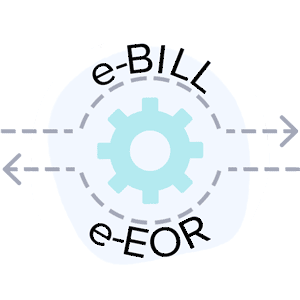Sedgwick Miskeying Some Workers’ Comp Bills

It’s not often that our support team fields a question that we haven’t already seen in some way, shape, or form. Over the years, we’ve built up a rock-solid understanding of the California workers’ comp system and its various players – both their assets and their possible pain points. But in recent weeks, a number of California workers’ comp providers alerted us to an unusual (and as far as we know, new) problem: Certain Sedgwick claims are being mysteriously miskeyed and subsequently denied.
Strangely, this issue appears to have emerged only within the last several months. A representative support case appears below, lightly edited for clarity:
March 2017
We are continuing to see incorrectly-keyed claims from Sedgwick, and it’s led to a lot of work printing, copying, and writing letters to get the claims reprocessed. In one of the latest examples, all the claims should have been processed under CPT Code 90837, but they were all different codes.
Our initial advice – and our recommended first line of defense for any provider facing an incorrect denial – is to submit the claim for Second Bill Review (SBR). Second Reviews are a powerful tool to hold claims administrators accountable for their errors
Better yet, the electronic Second Reviews submitted by daisyBill clients deliver fast and consistent payment, as mandated by California law. Remember, per Labor Code 4603.2. (e)(3), an EOR is due “within 14 days of a request for second review,” while payment “shall be made within 21 days of receipt of the request for second review.”[1] That means that providers who bill electronically can go through the entire billing cycle – from original bill to incorrect denial to second review to payment – faster than some claims administrators remit an initial EOR for an original bill submitted by mail.
Unfortunately, Second Reviews aren’t always enough. Some of our clients reported continued difficulties with Sedgwick claims even after submitting a compliant SBR citing the incorrect denial. Once again, we turn to a lightly-edited support case for details:
May 2017
Just wanted to check in with you about recommended handling of a case. Our SBR came back denied since Sedgwick could not match the procedure code. But the procedure code error was the reason for the SBR to begin with. Any recommendations?
At this point, we urge providers to file for Independent Bill Review, or IBR. The IBR process continues to be under-utilized by California providers, but it’s difficult to ignore the upside. Not only does it help providers get paid for incorrectly-denied bills, but it establishes powerful precedents for future bills.
In addition, we strongly recommend filing an Audit Complaint* with the DWC to alert the state of noncompliant behavior. At best, it could lead to DWC intervention. At worst, it gives the DWC valuable data and serves as a quick, simple way to affect change. daisyBill clients can submit Audit Complaints through our software; non-customers can find Audit Complaint forms and directions for manual filing on the DWC Audit Unit website.
We provide an online library of suggested Audit Complaint language to decrease the barrier to filing. A few minutes of copying and pasting could lead to the DWC intervening and correcting a claims administrator’s non-compliance. Providers can file anonymously, so reporting improper behavior poses no risk to the relationship between provider and claims administrator.
*NOTE: The Audit Complaint form was updated in 2019. Access the updated form here: https://www.dir.ca.gov/dwc/Auditref.pdf
Want to learn how to make workers’ comp billing simple? Schedule a live demo below with one of our California e-billing experts.
REQUEST DEMO
DaisyBill provides content as an insightful service to its readers and clients. It does not offer legal advice and cannot guarantee the accuracy or suitability of its content for a particular purpose.



